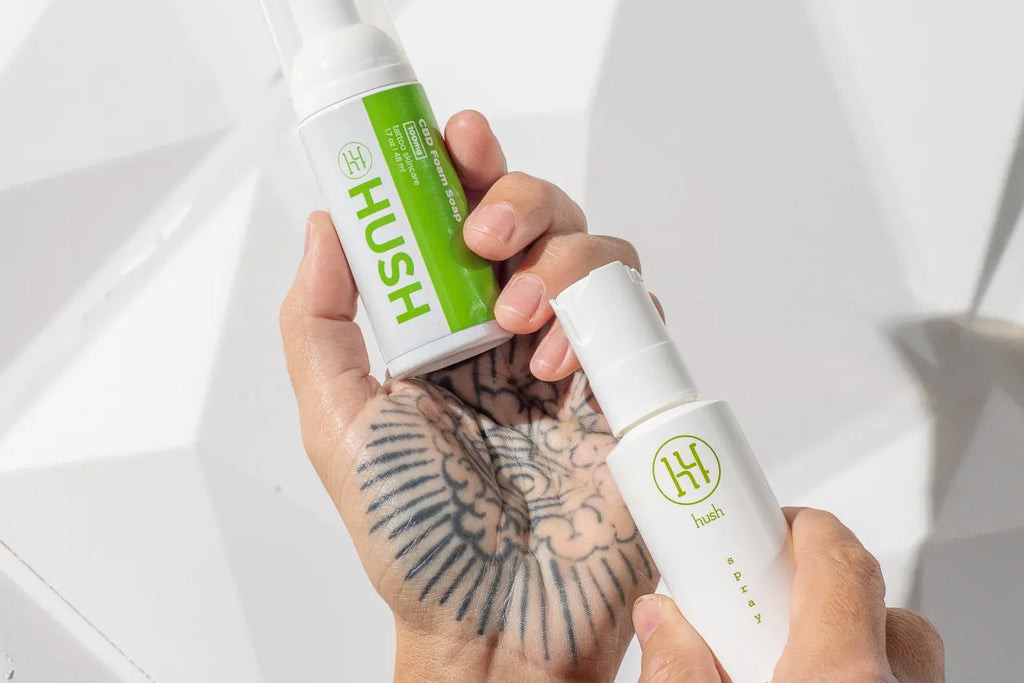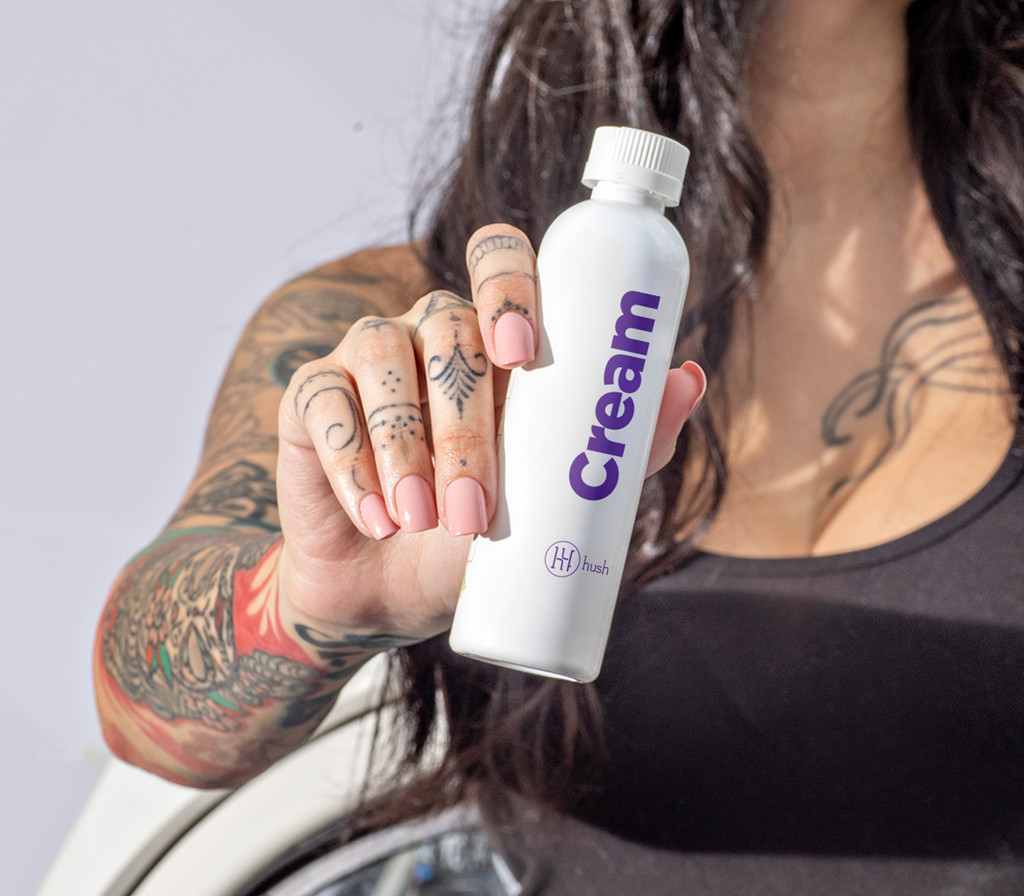Are Lip Tattoos Permanent? No, lip tattoos, especially inner lip tattoos, are not permanent. They are considered semi-permanent due to the rapid cell turnover inside the mouth, typically lasting only one to five years. If you’re exploring body art, tattooat.com offers inspiration, connects you with talented artists, and provides aftercare advice for various tattoo types. Explore different body art ideas, discover skilled tattoo artists, and learn about post-tattoo care at tattooat.com.
1. What are Lip Tattoos and How Long Do They Last?
Lip tattoos are cosmetic tattoos applied to the lips, either on the outer lip line (lip liner tattoos) or inside the lip (inner lip tattoos). Lip liner tattoos aim to define and enhance the natural lip shape, while inner lip tattoos are often for personal expression with small designs or words. While regular tattoos are designed to be permanent, lip tattoos, particularly inner lip tattoos, have a significantly shorter lifespan.
The longevity of a lip tattoo depends on several factors:
- Location: Inner lip tattoos fade much faster than lip liner tattoos due to the constant moisture and cell regeneration inside the mouth.
- Ink Type: The type of ink used can affect how long the tattoo lasts. Some pigments are more prone to fading.
- Lifestyle: Habits like smoking, vaping, and sun exposure (for lip liner tattoos) can accelerate fading.
- Aftercare: Proper aftercare can help prolong the life of a lip tattoo.
Generally, you can expect an inner lip tattoo to last anywhere from 1 to 5 years, with noticeable fading often occurring after the first year. Lip liner tattoos may last longer, potentially several years, but will still fade over time.
 Inner Lip Tattoo
Inner Lip Tattoo
2. Why Aren’t Lip Tattoos Permanent?
The primary reason lip tattoos aren’t permanent lies in the nature of the tissue inside the mouth. According to a study published in the Journal of Investigative Dermatology, the oral mucosa (the lining of the mouth) has a high rate of cell turnover. This means the cells are constantly regenerating and shedding, causing the tattoo ink to fade more quickly.
Here’s a breakdown of the biological factors:
- Rapid Cell Turnover: The cells lining the inside of your mouth regenerate much faster than skin cells elsewhere on your body. This constant renewal pushes the tattoo ink toward the surface, causing it to fade.
- Moisture: The constant moisture inside the mouth can also contribute to ink breakdown and fading.
- Enzymes: Saliva contains enzymes that can break down the tattoo pigment over time.
Essentially, your body is working to eliminate the foreign substance (tattoo ink) naturally and continuously.
3. What Factors Affect the Fading of Lip Tattoos?
Several factors can influence how quickly a lip tattoo fades:
| Factor | Description | Impact on Tattoo |
|---|---|---|
| Ink Quality | The quality and type of ink used play a significant role. Some inks are more stable and resistant to fading. | Higher quality inks tend to last longer. |
| Tattoo Placement | Inner lip tattoos fade faster than lip liner tattoos due to the higher rate of cell turnover inside the mouth. | Inner lip tattoos fade more quickly. |
| Sun Exposure | For lip liner tattoos, sun exposure can accelerate fading. UV rays break down the ink pigments. | Increases fading rate. |
| Lifestyle Habits | Smoking, vaping, and excessive alcohol consumption can negatively impact tattoo longevity. These habits can weaken the immune system and impair healing. | Accelerates fading. |
| Aftercare | Proper aftercare, including keeping the area clean and moisturized, can help prolong the life of the tattoo. | Improves tattoo longevity. |
| Individual Biology | Each person’s body reacts differently to tattoo ink. Factors like metabolism and immune system activity can influence how quickly the tattoo fades. | Varies from person to person. |
| Professionalism | The skill and experience of the tattoo artist also matter. A skilled artist will use proper techniques to ensure the ink is deposited correctly, which can improve its longevity. | Improve tattoo longevity |
4. Inner vs. Outer Lip Tattoos: Understanding the Difference in Longevity
The distinction between inner and outer lip tattoos is crucial when discussing permanence. The environment of the inner lip is vastly different from the outer lip, leading to significant differences in how long the tattoo lasts.
| Feature | Inner Lip Tattoo | Outer Lip Tattoo (Lip Liner) |
|---|---|---|
| Location | Inside the mouth, on the mucosal tissue. | On the outer lip line, on regular skin. |
| Cell Turnover | Very high rate of cell turnover. | Lower rate of cell turnover compared to the inner lip. |
| Moisture Level | Constantly moist. | Drier environment. |
| Sun Exposure | Not exposed to the sun. | Exposed to the sun, which can cause fading. |
| Typical Lifespan | 1-5 years, with noticeable fading after 1 year. | Potentially several years, but will still fade over time. |
| Common Designs | Small, simple designs or words. | Lip liner to enhance lip shape and color. |
| Fading Factors | Rapid cell turnover, constant moisture, enzymes in saliva. | Sun exposure, lifestyle habits, slower (but still present) cell turnover. |
| Aftercare | Gentle, alcohol-free mouthwash. Avoiding irritating foods. | Keeping the area clean and moisturized. Sun protection. |
5. What Designs are Suitable for Lip Tattoos?
Given the limited lifespan and space available, especially for inner lip tattoos, certain designs are more suitable than others. For inner lip tattoos, simple designs are generally preferred.
Here are some popular choices:
- Small Symbols: Stars, hearts, or other small, meaningful symbols.
- Single Words: Short words or initials with personal significance.
- Minimalist Designs: Simple lines or geometric shapes.
For lip liner tattoos, the focus is typically on enhancing the natural lip shape and color.
Common options include:
- Lip Liner: Defining the lip line to create a more pronounced shape.
- Lip Blush: Adding a subtle tint of color to the lips.
- Full Lip Color: Applying color to the entire lip area.
When choosing a design, consider the following:
- Simplicity: Intricate designs may not hold up well over time due to fading.
- Size: Keep the design small, especially for inner lip tattoos.
- Color: Lighter colors tend to fade faster than darker colors.
- Personal Meaning: Choose a design that is meaningful to you.
6. How to Prepare for a Lip Tattoo Appointment?
Proper preparation can help ensure a smooth and successful lip tattoo experience. Here are some tips to follow before your appointment:
- Research and Choose a Reputable Artist: Look for an artist with experience in lip tattoos and a portfolio of work that you admire. Read reviews and check for proper licensing and sanitation practices.
- Schedule a Consultation: Discuss your desired design, color, and any concerns you may have with the artist.
- Avoid Blood Thinners: Avoid taking aspirin, ibuprofen, or other blood-thinning medications for at least 24 hours before your appointment.
- Stay Hydrated: Drink plenty of water in the days leading up to your appointment.
- Exfoliate Your Lips: Gently exfoliate your lips a few days before your appointment to remove any dead skin cells.
- Moisturize Your Lips: Keep your lips moisturized with a good quality lip balm in the days leading up to your appointment.
- Avoid Alcohol and Caffeine: Avoid alcohol and caffeine for at least 24 hours before your appointment.
- Eat Before Your Appointment: Have a meal before your appointment, as you may not be able to eat for a few hours afterward.
7. Aftercare Tips for Lip Tattoos
Proper aftercare is essential for promoting healing and prolonging the life of your lip tattoo. Here are some aftercare tips to follow:
- Keep the Area Clean: Gently clean the tattooed area with a mild, fragrance-free soap and water several times a day.
- Use Alcohol-Free Mouthwash: For inner lip tattoos, use an alcohol-free mouthwash after eating or drinking anything other than water.
- Apply a Healing Balm: Apply a thin layer of a healing balm recommended by your artist to keep the area moisturized.
- Avoid Irritating Foods: Avoid spicy, acidic, or salty foods that can irritate the healing tattoo.
- Avoid Smoking and Vaping: Refrain from smoking or vaping, as these can delay healing and increase the risk of infection.
- Avoid Kissing: Avoid kissing or other intimate contact that could introduce bacteria to the healing tattoo.
- Protect from the Sun: For lip liner tattoos, protect the area from sun exposure by wearing a lip balm with SPF.
- Don’t Pick or Scratch: Avoid picking or scratching at the tattooed area, as this can cause infection and scarring.
- Stay Hydrated: Drink plenty of water to keep your body hydrated.
8. What are the Risks Associated with Lip Tattoos?
Like any tattoo procedure, lip tattoos carry some risks. It’s essential to be aware of these risks before getting a lip tattoo:
| Risk | Description |
|---|---|
| Infection | Bacteria can enter the skin through the tattoo needle, leading to infection. Proper sanitation and aftercare can minimize this risk. |
| Allergic Reaction | Some people may be allergic to the tattoo ink, resulting in redness, itching, or swelling. A patch test can help identify potential allergies. |
| Scarring | Improper technique or aftercare can lead to scarring. |
| Fading | Lip tattoos are prone to fading, especially inner lip tattoos. This is due to the rapid cell turnover in the mouth. |
| Cold Sores | Lip tattoos can trigger cold sores in people who are prone to them. Taking antiviral medication before and after the procedure can help prevent outbreaks. |
| Granulomas | Granulomas are small bumps that can form around the tattoo ink. They are usually harmless but may require treatment. |
| Keloids | Keloids are raised scars that can form at the tattoo site. People with a history of keloids are more prone to developing them. |
Choosing a reputable artist who follows strict sanitation practices and following proper aftercare instructions can help minimize these risks.
9. Lip Tattoo Removal Options
If you’re unhappy with your lip tattoo or it has faded unevenly, several removal options are available:
- Laser Tattoo Removal: Laser tattoo removal is the most common and effective method for removing tattoos. The laser breaks down the tattoo ink into smaller particles, which the body then eliminates.
- Surgical Excision: Surgical excision involves cutting out the tattooed skin and stitching the remaining skin together. This option is typically used for small tattoos.
- Dermabrasion: Dermabrasion involves sanding down the top layers of skin to remove the tattoo. This method is less effective than laser removal and can cause scarring.
- Chemical Peels: Chemical peels involve applying a chemical solution to the skin to remove the tattoo. This method is also less effective than laser removal and can cause skin damage.
The best removal method for you will depend on the size, location, and color of your tattoo, as well as your skin type and overall health. Consult with a qualified dermatologist or tattoo removal specialist to determine the most appropriate option.
10. Are Lip Tattoos Worth It?
Deciding whether or not to get a lip tattoo is a personal choice. Consider the pros and cons carefully:
Pros:
- Enhance Lip Shape and Color: Lip tattoos can enhance your natural lip shape and add a subtle tint of color.
- Convenience: Lip liner tattoos can eliminate the need to apply lip liner daily.
- Discreet: Inner lip tattoos are hidden and can be a form of personal expression.
- Boost Confidence: Lip tattoos can help improve your self-esteem by enhancing your appearance.
Cons:
- Not Permanent: Lip tattoos fade over time and require touch-ups.
- Painful: The procedure can be painful, although numbing cream can help.
- Risks: There are risks associated with any tattoo procedure, including infection, allergic reaction, and scarring.
- Cost: Lip tattoos can be expensive, especially if you need multiple touch-ups.
Ultimately, the decision of whether or not to get a lip tattoo depends on your individual preferences, priorities, and risk tolerance. If you’re looking for a long-lasting way to enhance your lips, lip tattoos may not be the best option. However, if you’re willing to accept the temporary nature of lip tattoos and are comfortable with the risks involved, they can be a fun and expressive way to enhance your appearance.
Discover Your Perfect Tattoo at tattooat.com
Ready to explore the world of tattoos? Whether you’re drawn to the subtle allure of lip tattoos or the bold statement of body art, tattooat.com is your ultimate resource. Discover a wealth of design inspiration, connect with talented artists, and learn everything you need to know about tattoo aftercare.
At tattooat.com, you can:
- Browse a Diverse Gallery: Explore countless tattoo designs across various styles and themes to spark your creativity.
- Find Local Artists: Locate skilled tattoo artists in the USA, including Portland, with the expertise to bring your vision to life.
- Learn Expert Tips: Access comprehensive guides on tattoo aftercare, ensuring your tattoo heals beautifully and lasts as long as possible.
- Stay Informed: Keep up-to-date with the latest tattoo trends, techniques, and industry news.
Don’t wait any longer to embark on your tattoo journey. Visit tattooat.com today and unlock a world of artistic expression.
 cream B110a535 2324 41bb 8421 6615db484b3c 1024×1024For more information or assistance, contact us:
cream B110a535 2324 41bb 8421 6615db484b3c 1024×1024For more information or assistance, contact us:
Address: 1825 SW Broadway, Portland, OR 97201, United States
Phone: +1 (503) 725-3000
Website: tattooat.com
FAQ About Lip Tattoos
1. How painful are lip tattoos?
The pain level varies from person to person, but most people report a mild to moderate level of discomfort. Numbing cream can be applied to minimize pain.
2. How much do lip tattoos cost?
The cost of a lip tattoo varies depending on the artist, location, and design. Expect to pay anywhere from $50 to $200 for an inner lip tattoo and $200 to $800 for lip liner or full lip color tattoos.
3. How long does it take for a lip tattoo to heal?
Inner lip tattoos typically heal in 1-2 weeks, while lip liner tattoos may take 2-4 weeks to heal.
4. Can I wear lipstick after getting a lip tattoo?
Avoid wearing lipstick or other lip products until the tattoo is fully healed.
5. Can I eat normally after getting a lip tattoo?
Avoid spicy, acidic, and salty foods that can irritate the healing tattoo. Stick to soft, bland foods for the first few days.
6. How often do lip tattoos need to be touched up?
Inner lip tattoos may need to be touched up every 1-2 years, while lip liner tattoos may need to be touched up every 2-5 years.
7. Are there any alternatives to lip tattoos?
Yes, lip liner, lip gloss, and lip plumping products can enhance your lips without getting a tattoo.
8. Can lip tattoos cause allergic reactions?
Yes, some people may be allergic to the tattoo ink. A patch test can help identify potential allergies.
9. Can I get a lip tattoo if I have cold sores?
Lip tattoos can trigger cold sores in people who are prone to them. Taking antiviral medication before and after the procedure can help prevent outbreaks.
10. What should I do if my lip tattoo gets infected?
If you suspect your lip tattoo is infected, contact your tattoo artist or a healthcare professional immediately.
